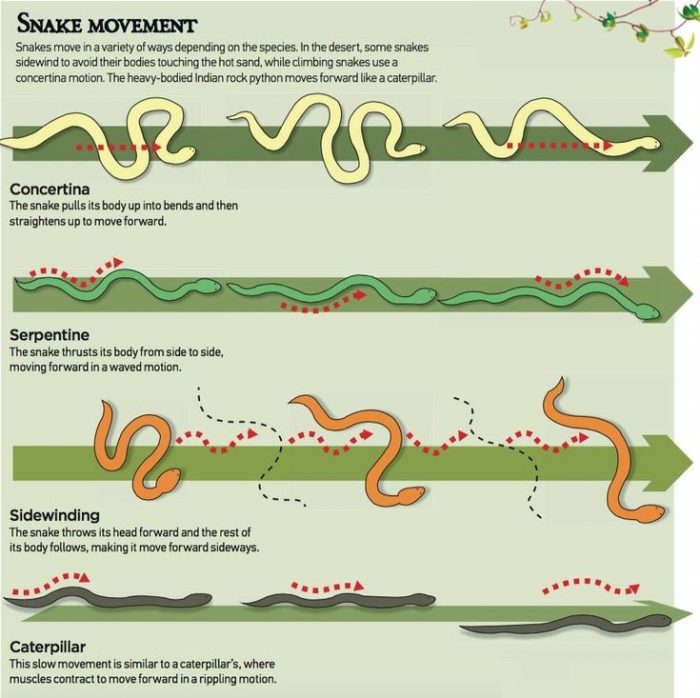
Snakes are unique creatures. They can be found almost everywhere on Earth, and they come in all shapes, sizes, and colors. But what’s even more interesting is that snakes have a variety of ways to move through their environment. In this article, we’ll talk about four different types of snake movements you might encounter: concertina, sidewinding, serpentine and caterpillar crawling!
Concertina
Concertina is a type of snake movement in which the body bends in a concertina fashion. This type of movement allows snakes to move through narrow spaces and squeeze through small crevices. A good example is when you see a snake slither across your path at night and then disappear into a crack between two rocks or boards. Snakes use their concertina ability to help them hunt for prey, as well as escape predators that may be chasing after them. For example: if you were walking along in the woods and came upon an angry rattlesnake that was ready to strike, he would use this technique so he could get out of reach before striking back!
Serpentine
Snakes use their muscles to move their body in a serpentine pattern. The snake will flex its body, then move forward by straightening out and extending their front half, before repeating the process with the rear half of their body. This allows them to move in any direction, including upwards.
Sidewinding
Sidewinding is a form of lateral undulation used by snakes to move across loose sand or soil. The snake moves its body in a series of S-shaped curves, lifting the front part of its body off the ground and then moving it forward. As it does this, it pushes aside any sand or dirt that lies in front of it with its belly scales (which act like miniature shovels). The movement is similar to walking on tiptoes with your hands held high above your head–except that instead of feet and hands, you have scales and tails!
Caterpillar
The caterpillar is the most common way snakes move. It’s also called lateral undulation and it’s how most snakes get around. The snake uses its belly scales to grip the ground, then pushes its body forward, then pulls it back. This process repeats over and over again as the snake moves across rough terrain or up walls. Snakes don’t have legs like lizards do so they can’t walk on flat surfaces like you would with your feet (unless they’re slithery enough). Snakes use this method because it’s efficient; it uses less energy than other methods would require them to expend in order for them to get from point A to point B!
The way snakes move is a lot more varied than you might think. Snakes use their bodies to move through the world, whether it’s getting food or escaping danger. They can slither on their bellies, slide their bodies along the ground and up walls or trees, coil around themselves to protect themselves from predators and prey (or just for fun), swim with undulating waves of muscle down their length like an eel would do if it could swim through water rather than air–the list goes on! The type of snake will determine how they move in general; some species are more likely to use one form over another due to habitat preferences or physical limitations like size/shape/length-to-width ratio (if they’re long but narrow). Some species also have more than one method available depending on what sort of situation they find themselves in at any given moment: for example, carpet pythons tend toward lateral undulation when hunting prey but switch over into sidewinding when trying not get stuck under rocks while fleeing from larger animals like monitor lizards.*
